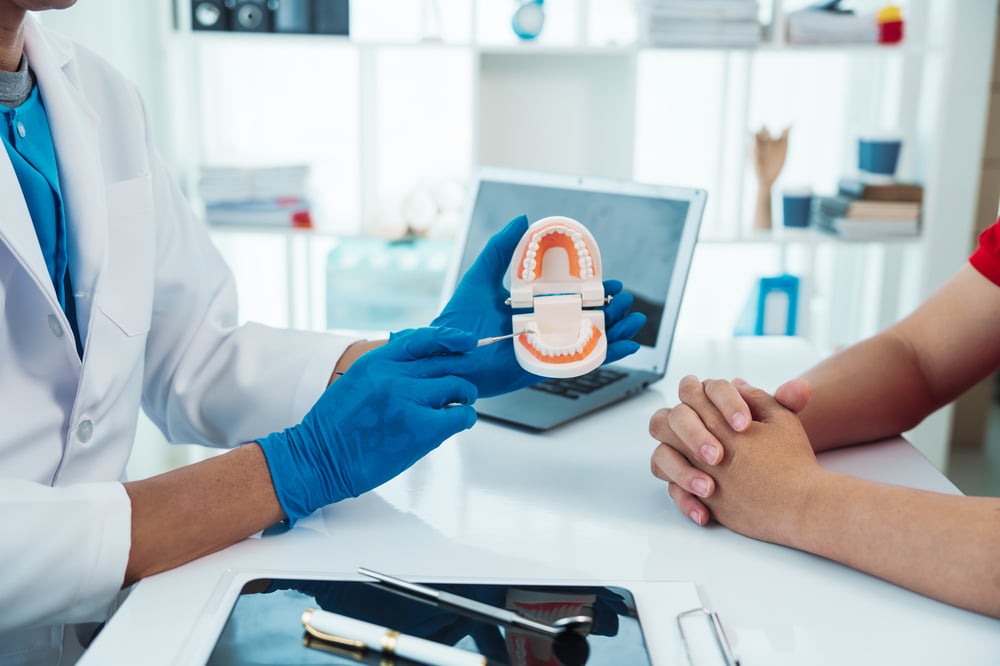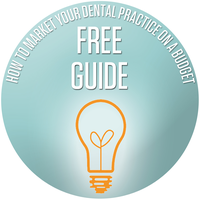
Oral health literacy encompasses how people “understand and use oral health information and services." Without understanding it is hard to make good decisions about mouth health. In fact, 1 in 10 adults in the U.S. can fully understand written health literature. That’s why patient education in dentistry is so important.
When patients get engaged in their oral health journey everyone succeeds. The patient can develop dental health routines that follow them throughout their life. And they are more likely to become repeat visitors and accept recommendations for care.
As a dental provider you play a crucial role in improving the dental health literacy of patients. Effective communication and education can empower patients. They will be able to make informed decisions about their oral health. Here we will go over strategies you can use to teach your patients about their dental health.
Key Takeaways:
- Only 1 in 10 U.S. adults can understand written health literature.
- Dental providers play a crucial role in improving oral health literacy.
- Oral health care tips lead to lifelong routines and can result in repeat visitors.
- Explain dental care and procedures without using jargon.
- Offer tailored advice and recommendations, like how to brush and floss well.
- Use success stories and testimonials to illustrate the effects of oral health care.

Establish a welcoming environment:
It all starts with the waiting room and extends to the chair. In all aspects you want to make your dental practice a comfortable and open space. You want your patients to feel safe asking questions and discussing their concerns. This will make treatment more successful.

Use visual aids and resources:
Avoid using jargon and technical terms that may confuse patients. You will want to explain the dental care and procedures in a way that is easy to understand. Instead, feel free to use visual aids. Diagrams and models will help the patient better understand their treatment. You can leverage technology such as X-rays and intraoral photos. They will illustrate dental issues and treatment options.
Also offer written materials like pamphlets or brochures. They are a visual way to highlight key points about mouth health. They can also be used to explain common dental procedures.

Highlight oral health and overall health:
Emphasize how oral health is linked to overall health. You can tell them about the connection between gum disease and heart disease or diabetes. This can motivate patients to take their dental care to heart.
Patients who were surveyed agree. High levels of health literacy improve oral health status. And they lead to better communication with their dentist.
It is important to note that several factors have an impact on dental health. It's worth considering gender, education, financial status, and access to dental care.
To assist patients in their journey, dentists can also refer to resources like the Framework to Foster Oral Health Literacy.

Personalized recommendations:
Once you’ve established a rapport you can tailor your advice and offer recommendations. For instance, explain how certain habits or dietary choices impact the ability to have a healthy mouth. When appropriate, you can instruct your patient on proper brushing and flossing techniques.
At the end of the visit encourage your patient to schedule a follow-up appointment. This allows them to get involved in tracking their progress. It also reinforces the importance of oral health practices.

Online resources:
If your patient wants more oral health care tips, you can recommend reputable online resources. Patient dental education can help each person be even more in-tune with their oral health.
The ADA has an Action Guide for Health Literacy, and to resources you can share with patients.

Patient testimonials:
A wonderful way to encourage current and future patients is to share success stories and testimonials. They can illustrate how the dental health of your patients has improved at your practice. Before and after examples make a powerful statement about dental care.

Community outreach and education:
You can build the trust and visibility of your practice in the local area by being part of community events. You can also work with local organizations to provide dental health tips through programs and workshops. This will raise awareness and promote better oral health practices.
By using these strategies, you can enhance the levels of patient education in dentistry. Plus, the outcomes of your patients will be improved. Patients will also feel a greater sense of personal responsibility.
For more oral health tips: Get this free dental guide for educating your new patients.
Want to join the Solstice network?
Connect with our dedicated provider relations team for more information about joining our network. You can call 1.877.760.2247 or email providerrelations@solsticebenefits.com.
Already in the Solstice network?
Search to see if you're part of the Solstice dental PPO or HMO network. You can also go to https://www.mysolstice.net/ or call us at 1.877.760.2247.



